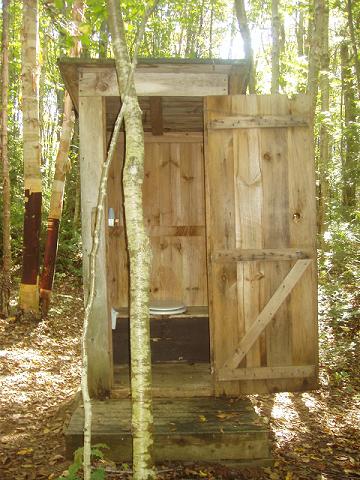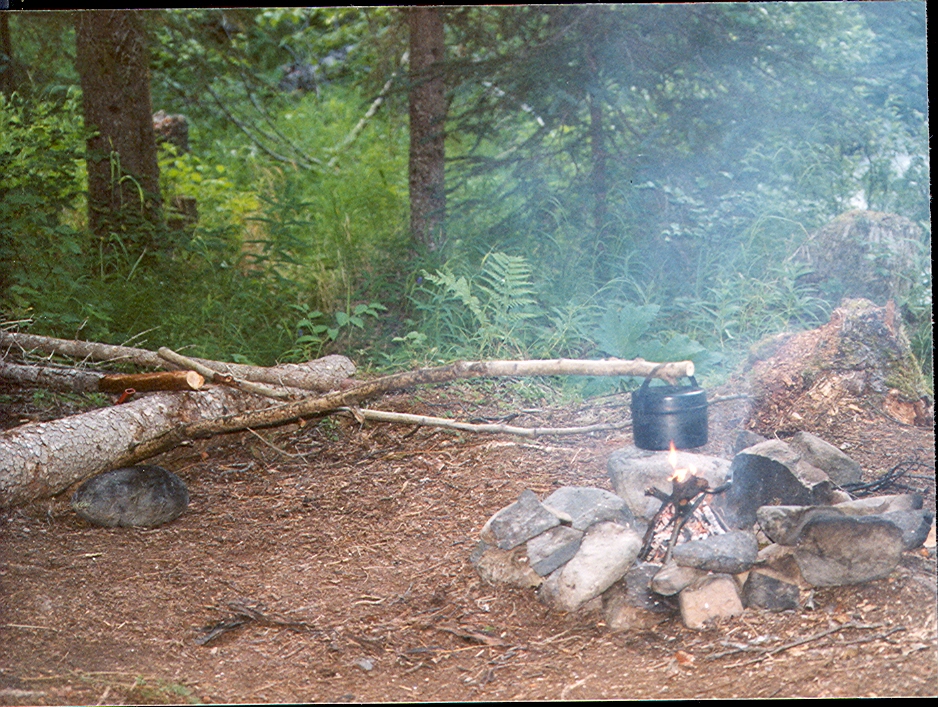How to Set Up a Campsite
Once you have found you place to camp you have to decide how to set up a campsite. You already have figured out the prevailing winds and the slope and type of terrain but how about the weather forecast. Is it going to raw with rain or be sunny and warm ?
Depending on the type of tent you have ( does it have a fly or is it a cabin tent ) you may want to set up a tarp. If you have a tent without a fly I always decide where to put the tent and set up the tarp to cover where the tent is going to be. You can set up a tarp after the tent is assembled. If you have a fly for your tent you can set up the tarp where you are going to spend the most time.
If it is already raining you may want to set up your tarp first so the rest of your camping gear remains dry.
If you are staying at a predesignated camping area such as a campground you have to decide the prevailing wind and set up your tent where the smoke and embers will not harm your tent and tarp. There is nothing worse than finding holes in your tent from hot embers.
Where to Put a Latrine
 If you enjoy rustic camping like I do there will not be any outhouses or restrooms. If there are restrooms you can skip this section.
If you enjoy rustic camping like I do there will not be any outhouses or restrooms. If there are restrooms you can skip this section.
You do not want to be directly downwind from your latrine unless you prefer unpleasant odors. Nor do you want your latrine near your cooking area. You also want your latrine far enough away to offer some privacy. Depending on the amount of brush in the area 50 to 100 ft should be enough. The latrine should be close enough to a tree that you can use for balance. For more information you can check out how to build a latrine.
Where to Put a Cook Area or Fireplace
 As stated before, you have to be careful of smoke and hot embers from your campfire so you do not want to erect your campfire directly upwind from your tarp or tent. The wind will carry the embers downwind.
As stated before, you have to be careful of smoke and hot embers from your campfire so you do not want to erect your campfire directly upwind from your tarp or tent. The wind will carry the embers downwind.
You also do not want to store your food directly upwind or downwind from your tent. Animals will smell your food and follow the scent. If your food is directly in line with your tent animals may enter your campsite. This is also true for eating areas. Animals can smell juices, crumbs and partially burnt food in the ashes.
Animals will follow the scent by moving up wind towards the source of the scent. After the animal finds the source and discovers there is not anything substantial to eat they will usually sniff the air and get a whiff of you. While many animals try to minimize contact with people, there are some that will become curious and check you out. You can hang your food close to your cook area but in bear country your food should be atleast 100 feet from your tent. You can learn more about hanging food on our camping with bears page.
I made a small diagram to illustrate a campsite in regards to wind direction. You should not align areas so they are upwind or downwind of each other.
Knowing how to set up a campsite because of variables such as terrain and vegetation is helpful and will help the longevity of your equipment. This is the general scenario I follow when backpacking or out in the backcountry. If in a campground, you will be limited to where you can put your tent, the fireplace will already be situated and rest rooms will be supplied. Just make sure your tent is far enough away from the fire so it doesn't catch fire or develop holes from embers.






